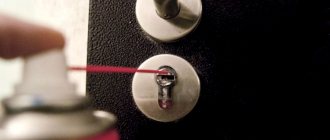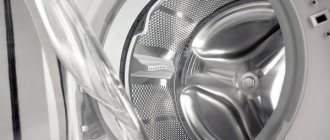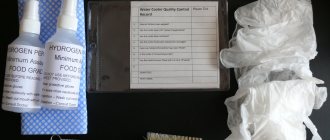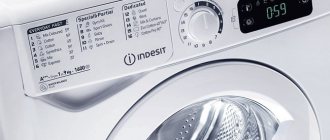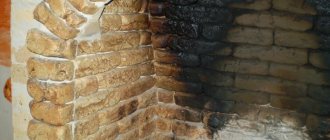There is nothing more unpleasant than coming home and struggling with the front door lock that has suddenly jammed.
People have used wooden bolts and latches since ancient times. When metal appeared, locks became metal. However, designs vaguely resembling modern ones appeared in England only in 870. This was a new stage in the “fate of castles”. Now it is difficult to imagine any home without a lock.
What to do if the door does not open and how to open the lock? Provided that the owner is familiar with the mechanism, you can try to open it yourself using a pin, screwdriver, crowbar or other tools.
Opening a stuck front door lock
It is best to turn to specialists, but there are situations when calling a specialist is not possible. Moreover, independent intervention in most cases leads to aggravation of the problem. Below is a mini guide on how to open a door lock with minimal losses.
What to do if the key is stuck in the lock and won’t turn
It is necessary to lubricate the key hole with a liquid - WD - 40 station wagon. After a short period of time, try to open again.
Perhaps the lock is jammed due to condensation accumulated inside
In the household department there is always liquid - defroster. We water the lock hole as deeply as possible with it. Next we follow the instructions for the liquid.
The key is stuck in the lock, broken or completely broken
You'll have to work with pliers. When the end of the key is very small and there is nothing to grab onto, you should drill out the central secret part.
The lock may not open if the door is skewed
If you lift the edge of the door with a pry bar or other improvised means, the locking device can be unlocked.
The front door lever lock is stuck
If, after making a couple of revolutions, the next one does not turn, then the reason is that the lever lock is jammed. The protrusions (longitudinal) should be ground off with a file. They do not allow the key to turn.
Next, turn the key inside out and unlock the lock. Provided that the file is missing, you need to release the lock. The key is inserted upside down.
The key is stuck in the cylinder lock - what to do?
This type of lock has a weak point - its larva. It tends to break first. It cannot be repaired, but it can be replaced, and on your own. You need to proceed like this: at the end of the door leaf we twist the side metal strip.
Next, you need to find the screw that holds the cylinder in place and unscrew it. Remove the contents of the larva, having previously purchased a similar one. Put everything in reverse order. Remove the key.
The locking mechanism is blocked
The most common reason is contamination and, as a result, fixation of the tongue. In this case, the door and shutter do not open. The solution to this point is to press the tongue. It is worth using a metal ruler or a knife blade. In extreme cases, plastic will do.
It is necessary to insert the blade into the gap between the door and the frame. The farther you can insert it, the faster the tongue will catch. Next, push the far edge of the tongue out of the groove. You will need to apply force to the process until a characteristic click appears.
Reasons for a jammed door lock
Any mechanism can break down and fail. However, an experienced master can predict the situation in advance.
Signs that the door lock will soon break:
- slight periodic jamming;
- getting stuck when turning;
- inability to close the “first time”;
- “overshoot” at idle;
- the presence of extraneous crackling.
Most likely the reasons for the lock failure are mechanical. Nevertheless, careless treatment of the mechanism affects its condition.
It is always better to be proactive and check for circumstances that could be fatal for the castle:
- debris in the keyhole;
- use of the key for other purposes and, as a result, deformation;
- “slamming” doors with excessive force;
- swelling of the canvas due to high humidity;
- distortion due to the massiveness of the structure;
- use of a duplicate made in a handicraft way;
- not regular maintenance: lubrication, cleaning;
- incorrect actions during operation;
- manufacturing defects;
- installation by non-professionals;
- uneven hinges, sagging door leaf.
Replacing a damaged larva
The method of replacing a faulty core depends on the type of failure and the required urgency of action:
- The key cannot be inserted, it jams, it turns - initially it is recommended to clean the mechanism and lubricate it with special products (machine oil, grease, universal WD-40). If the action does not help, replace the larva using the method of drilling through a hole. The method will help to completely preserve the structure.
- The key broke in the lock, debris or foreign objects got into the hole, and they cannot be removed - replacing the core is also carried out by drilling, but the drill is not placed in the hole, but in the narrow part of the cylinder.
- The lock is locked and cannot be opened. If you need to quickly unlock the door, knocking or breaking is used. But later the lock will have to be completely changed.
- There is no key to unlock the door - you can try to open the door with master keys, this is a more gentle way. It is better to replace the larva by drilling it out.
How to solve a problem
The solution depends on the situation and the problem itself.
Let's look at the main reasons and ways to resolve them:
- Mechanical damage. These include a broken key, its wedge, and “jamming” of moving parts in the central part of the lock. Sometimes such damage can be repaired on your own.
- If there is a manufacturing defect, you must invite a sales representative of the company or a service center to service the product.
- Unfair operation wears out the working mechanism. A jammed key can be repaired by lubricating the key hole.
- Sagging and distortions of the sash during installation can only be eliminated in one way - redoing it. This issue can be resolved with the help of specialists who carried out the installation. The same problems include skewed door leaf.
- If you have a complex lock with several degrees of protection, self-repair is not recommended. It will lead to disappointment and worsen the situation.
- If the key does not go all the way, then you cannot push it with force. It should be treated with oil or washed with kerosene. Then just try to insert the key into the lock, making careful movements.
- To clean debris in the lock (match, chewing gum), you can use tweezers, hard wire or a brush with metal bristles.
- If the problem is the key sticking out on the opposite side, you can try to squeeze it out using a nail file, hairpin, or French pin.
Necessary tool
Depending on the nature of the breakdown, different tools are used to repair the lock and unlock the front door:
- Lubricants if the malfunction is associated with a high coefficient of friction and the presence of corrosion. A penetrating lubricant is best suited for such purposes.
- A screwdriver, if necessary, to disassemble the lock. To speed up this operation, a screwdriver with replaceable bits is suitable.
Screwdriver
- Pliers for removing a broken key with force.
- Grinder for sawing hinges or frames in case of an irreparable situation.
- A crowbar for squeezing the door in case the door is jammed in the frame.
- A hammer with a chisel, if necessary, to knock out the cylinder from the cylinder.
- A drill with a metal drill when deciding to drill out the larva.
Drill for drilling out the cylinder
The above is not a complete list of tools for repairing a lock in case of jamming. Many experts use improvised methods to solve the problem.
Universal ways to open a door
It is recommended to perform an emergency opening of the door only when there is no burglary protection.
It is important not to cause harm! Do not damage the working mechanism.
If the door does not open, we try alternative methods:
- For cylinder mechanisms, it is important to try to find a similar key.
- Door release method. It opens access to the latch. Use a tool (screwdriver, knife) to press the latch so that it comes out of the strike plate.
- Turning the secret part with a screwdriver.
- Picking the lock. Drill out the larvae. Knock out the lever (secret with curly cutouts).
- Chemicals can be quite aggressive. If the lock in the door is jammed, you need to fill the keyhole with acid or liquid nitrogen, then roll up the mechanism.
What to do if the key gets stuck?
The work should be performed in the same way as when the lock is jammed. It will take a lot of patience when vandals insert matches or other objects into the larva
To correct the situation, use pliers, carefully turning, to pull the key out of the hole. Using thin wires with curved edges, we pull out foreign objects from the larva
If the cylinder is dirty or the lubricant has frozen, the keyhole is filled with VD, after a pause, we try to pull out the stuck key, gradually loosening it
It is important here not to break the key in the well. If this happens, you need to disassemble the lock or remove the cylinder and try to remove the fragment
Lever locks are simple in this regard. Having removed the cover, we release the plates and take out the fragment. If the key remains in the cylinder and does not come out after treatment with liquid, this will require replacing the cylinder.
More complex situations and if there are no skills in working with plumbing tools will require calling specialists.
Lock operation prevention
To prevent the door lock from breaking, you need to:
- Check the availability of warranty obligations.
- Purchase good quality locks made in Austria, Germany, Poland, Turkey or Ukraine.
- Checking the functionality of the mechanism at the place of purchase.
- Inspect the lock for nicks and rust.
- Follow the operating instructions after installation.
Important! Prevention must be done with means intended for mechanisms.
It is not recommended to use natural oils (sunflower, etc.), as they increase the risk of dust and dirt sticking.
